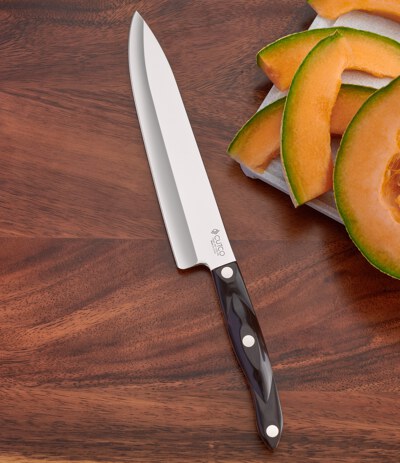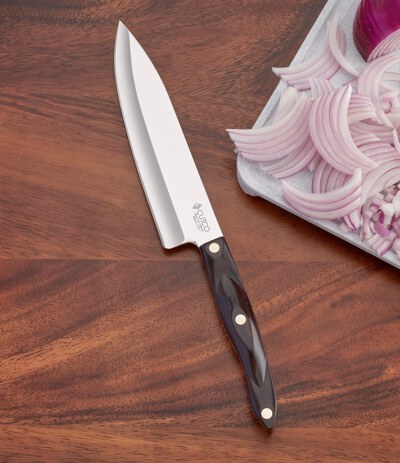Knife Cutting Basics
419 days ago
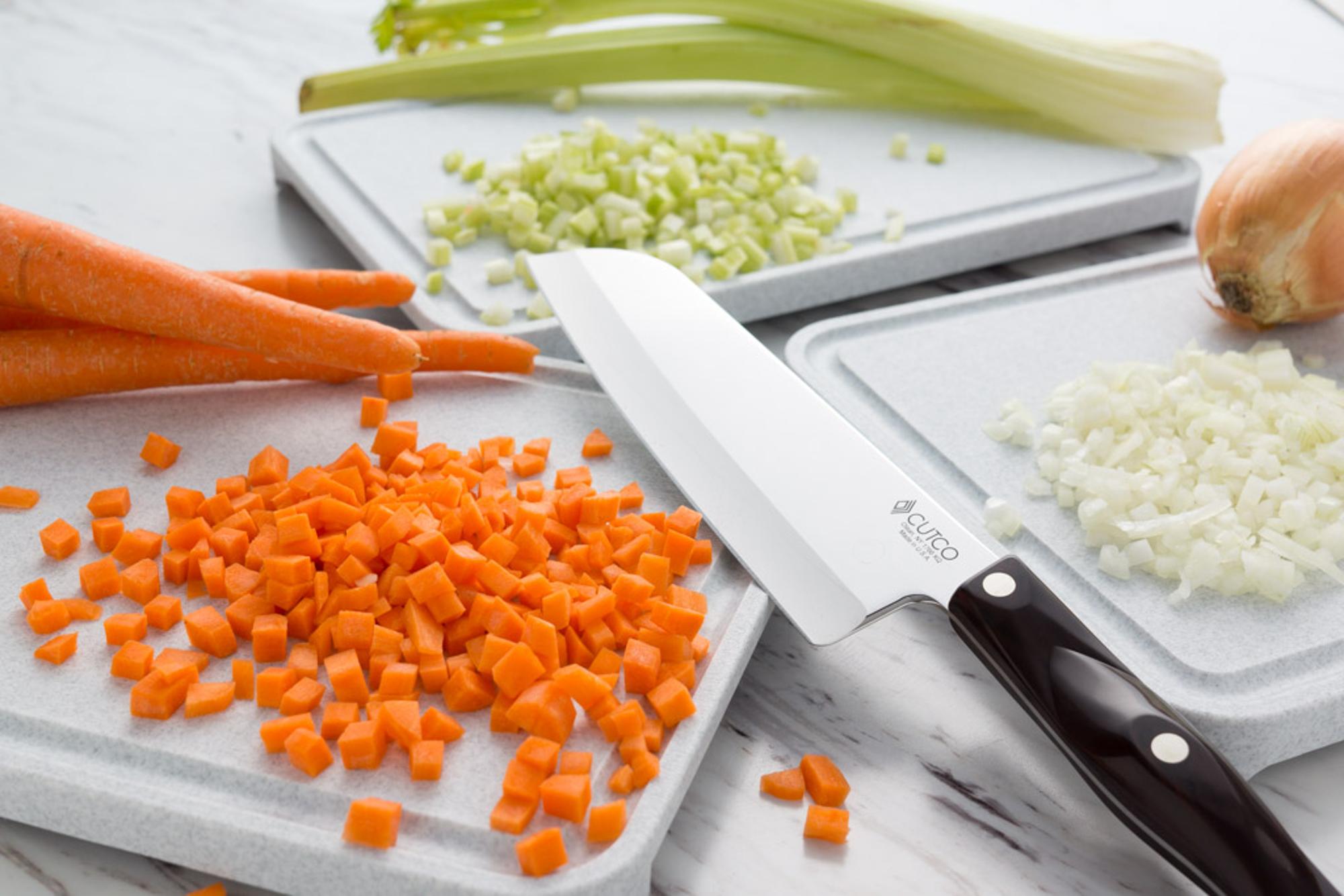
Learn some knife cutting basics to give yourself the confidence to food prep like a pro. As with learning any new skill, starting slow and practicing are the keys to success.
Comfortable To Hold
One of the first things to pay attention to when learning how to use a kitchen knife is how it feels in your hand and how it moves along the cutting board. Is the knife easy to hold, well balanced and sharp?
When holding a knife, it should feel like an extension of your hand. It should be comfortable to hold and easy to maneuver. Cutco’s knife handles help in both those areas. They are ergonomically designed to lock the thumb and forefinger into place for a secure, comfortable grip for less fatigue and more control while cutting.
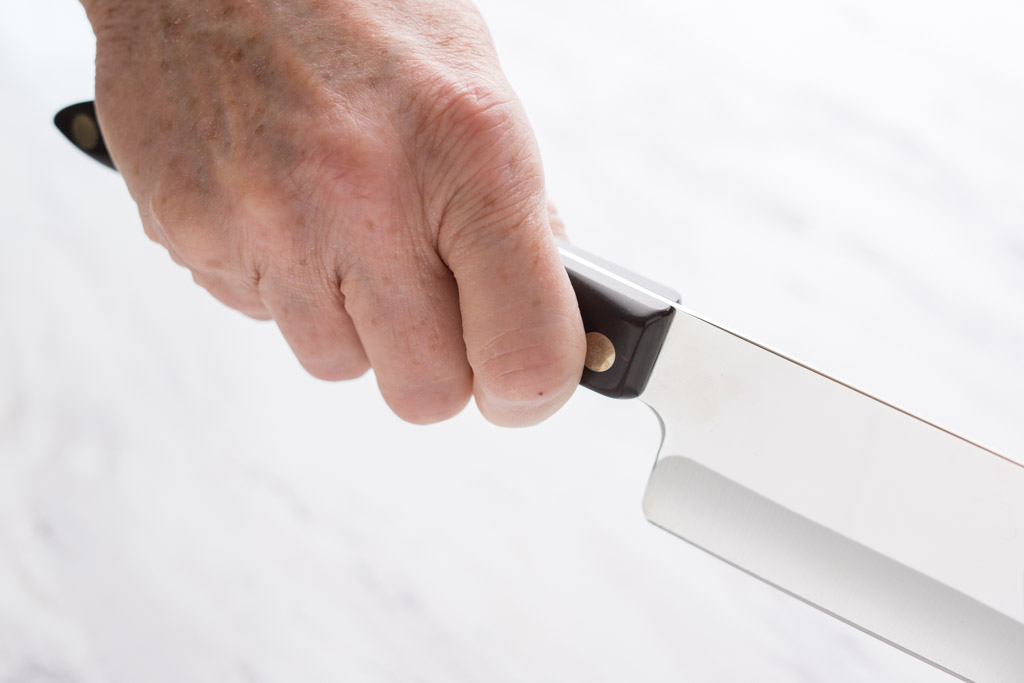
It’s also acceptable to hold the knife in a pinch grip, which you’ll see many professional chefs do, where your forefinger and thumb pinch the blade near the handle.
Now that you’ve got a kitchen knife that feels good in your hand, it’s time to work on technique.
How To Move a Knife While Cutting
Most knives, straight-edge knives in particular, cut best when moving them forward and down. This motion allows the knife to do the work, using less force. It should be a fluid movement keeping the knife in better alignment for uniform cutting.

Here are a few other knife cutting basics to keep in mind:
Begin the cut toward the tip of the knife and push the blade forward across the food until you reach the heel. If you reach the heel before completing the cut, pull straight back and repeat the forward motion.
For foods that sit high on the cutting board, like onions and potatoes, also start the cut with the top part of the knife near the tip resting on the food.
Depending on the food you’re cutting, you may have to adjust the motion. For example, for smaller foods like carrots and celery start with the tip of the blade on the cutting board but use the same forward and down motion when cutting.
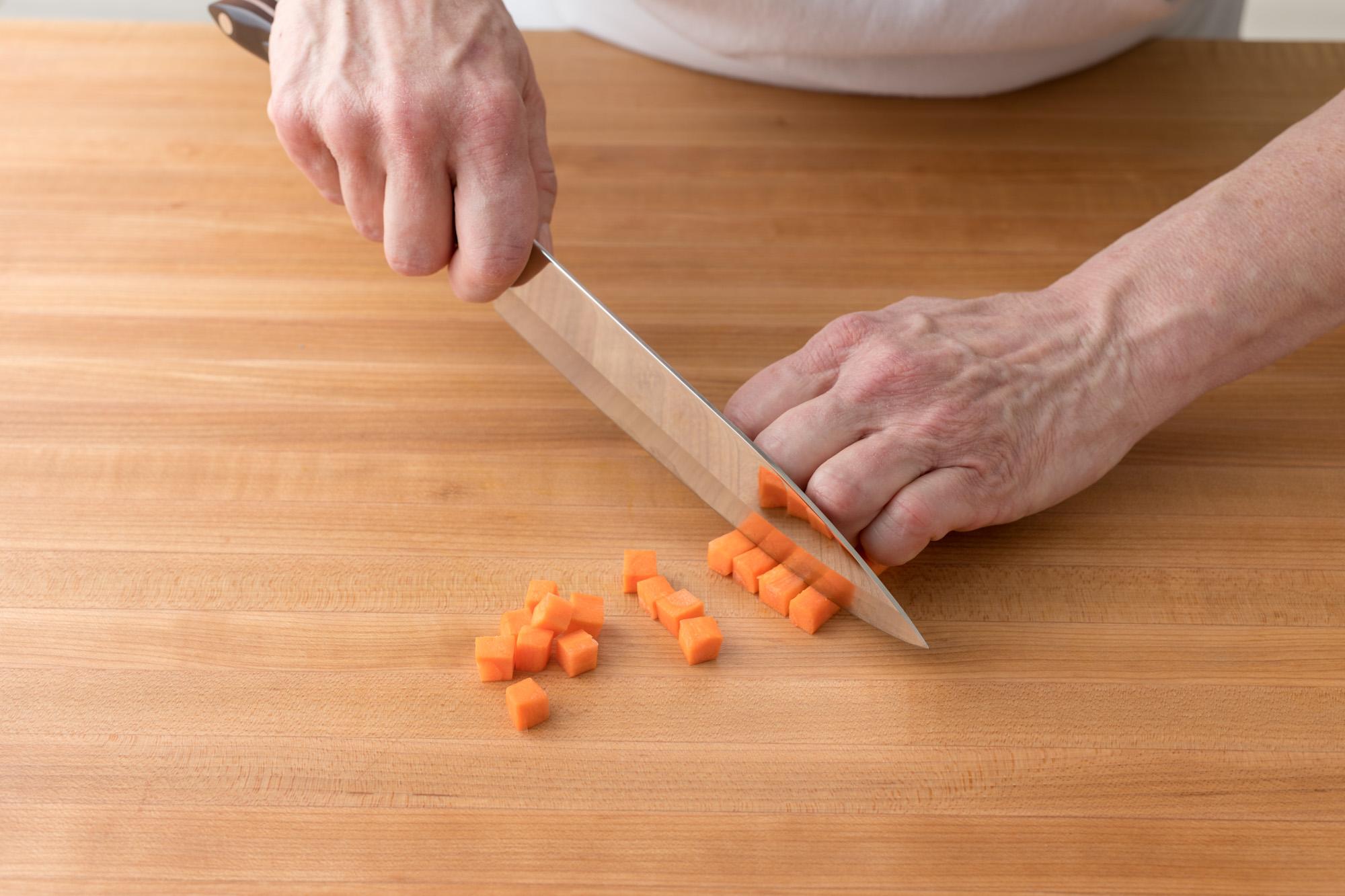
For mincing small items like herbs and garlic use a rocking motion, placing your opposite hand flat on the top of the blade. Rock the knife along the sharp, curved edge and pivot it across the food without lifting the tip of the knife from the cutting board.
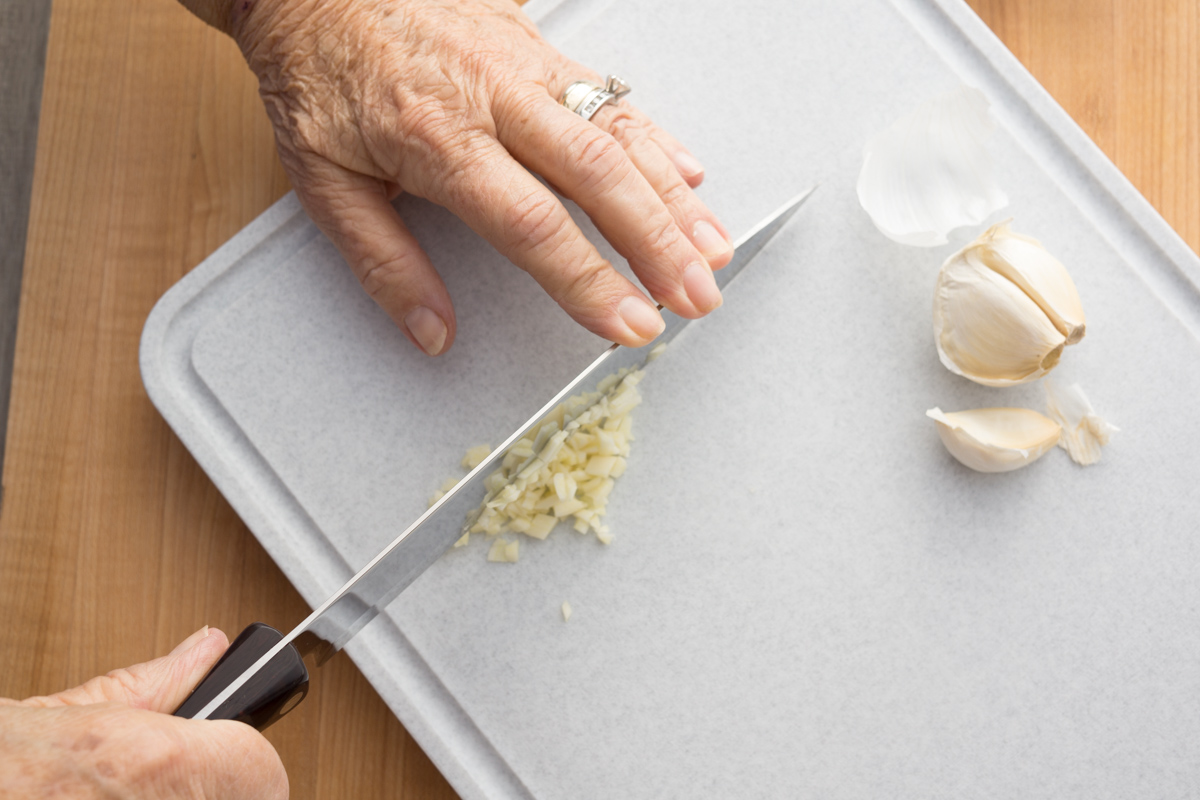
Maintain Your Knives
With all that being said, it’s also important to use a sharp knife for a fluid cutting motion that uses less force. A sharp knife is safer to use and allows you to make smooth, uniform cuts.
For continued good performance, maintain your knives periodically by sharpening your knives at home. Then every few years, when home sharpening just isn’t cutting it any longer, consider having them professionally sharpened.
Also take note of the surface you're cutting on. Avoid cutting on glass or ceramic surfaces, which can quickly dull your knife and instead use edge-friendly cutting boards made of plastic or wood.
To learn more knife cutting basics, take a look at our Knife Skills library for easy tutorials on how to cut a variety of food.

